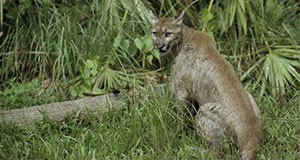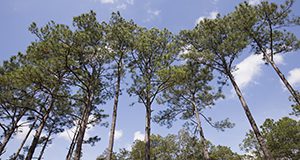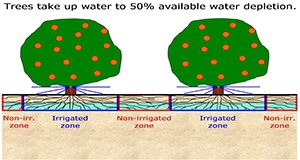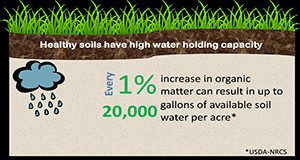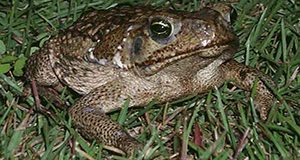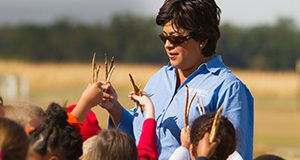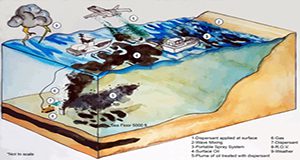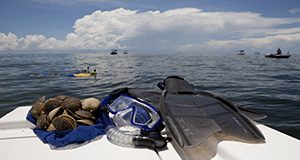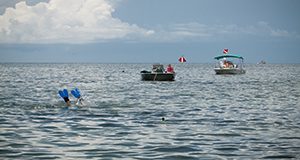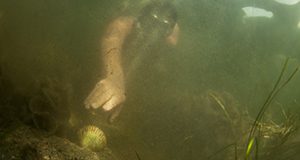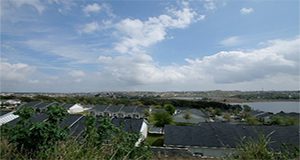A land trust is a private nonprofit organization that owns and manages land to protect its natural, economic, and cultural value. Land trusts may also educate the public about local conservation efforts. This two-page factsheet written by Benjamin W. North and Elizabeth F. Pienaar and published by the UF/IFAS Department of Wildlife Ecology and Conservation explains the important role land trusts play and provides tips on how to establish a land trust to protect land in your community.
http://edis.ifas.ufl.edu/uw436
Category: Environment
Communicating with Extension Clients about Water
Water impacts Florida’s tourism, agriculture, retail, and real estate development industries, all of which significantly contribute to Florida’s economy. Enhancing and protecting water quantity, quality, and supply is of ever-increasing importance to UF/IFAS Extension. This four-page document will provide an overview of how to communicate with Florida residents about water, including information about their preferred communication method and what water-related topics are of interest to Florida residents. Written by Alexa J. Lamm, Phillip Thomas Stokes, and Caroline G. Roper, and published by UF’s Agricultural Education and Communication Department, September 2017.
http://edis.ifas.ufl.edu/wc165
Florida Trees Store Carbon in Forests and Wood Products
Trees store carbon as they grow and produce wood. Carbon, and carbon storage in particular, have become important topics as policymakers, scientists, and industry leaders consider how to address the increasing amount of CO2 in our atmosphere. Because it changes the composition of the atmosphere, CO2 is a leading contributor to climate change. This 4-page fact sheet written by Adam Maggard, Leslie Boby, and Martha Monroe and published by the UF/IFAS School of Forest Resources and Conservation explains how storing carbon in living trees and in long-lasting wood products such as lumber and furniture can reduce atmospheric CO2. Florida’s forest and wood-product industries are worth billions of dollars. Clean water, wildlife, and other benefits add to the value and importance of these forests.
http://edis.ifas.ufl.edu/fr409
Microirrigation for Home Landscapes
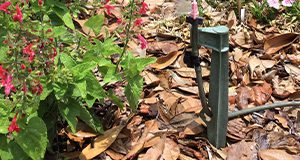 Microirrigation is a way to water plants using low pressure and low flowrates (usually 15 psi or less and 60 gph or less). Microirrigation systems can be easy to install above, on, or below the soil or mulch in landscape beds and are inexpensive to purchase. This 3-page fact sheet discusses types of microirrigation systems, benefits, design and installation, and maintenance. Written by Anne Yasalonis and Michael Dukes, and published by the UF/IFAS Department of Agricultural and Biological Engineering, October 2017.
Microirrigation is a way to water plants using low pressure and low flowrates (usually 15 psi or less and 60 gph or less). Microirrigation systems can be easy to install above, on, or below the soil or mulch in landscape beds and are inexpensive to purchase. This 3-page fact sheet discusses types of microirrigation systems, benefits, design and installation, and maintenance. Written by Anne Yasalonis and Michael Dukes, and published by the UF/IFAS Department of Agricultural and Biological Engineering, October 2017.
http://edis.ifas.ufl.edu/ae524
Irrigation Management of HLB-Affected Trees
Water is a limiting factor in Florida citrus production due to non-uniform rainfall distribution and the low water-holding capacity of our sandy soils. Because periods of low rainfall coincide with critical stages of citrus production, additional irrigation is necessary to reduce the negative effects of water stress. This 6-page document covers recent findings on water use of trees affected by citrus greening and the impact this would have on irrigation management considerations. Written by Davie Kadyampakeni, Kelly Morgan, Mongi Zekri, Rhuanito Ferrarezi, Arnold Schumann, and Thomas A. Obreza and published by the UF/IFAS Department of Soil and Water Sciences, October 2017.
http://edis.ifas.ufl.edu/ss659
New Featured Creatures
Raising Soil Organic Matter Content to Improve Water Holding Capacity
Just like a sponge, soils with high organic matter (OM) can absorb and hold water during rainfall events and deliver it to plants during dry spells. Water is increasingly becoming the most limited natural resource supporting agriculture, but growers can improve their water storage capacity by raising their soil’s OM content. This 5-page fact sheet demonstrates how soil OM content can help increase water holding capacity of soils and describes the laboratory procedure to measure WHC. Written by Jehangir H. Bhadha, Jay M. Capasso, Raju Khatiwada, Stewart Swanson, and Christopher LaBorde, and published by the UF/IFAS Department of Soil and Water Sciences, October 2017.
http://edis.ifas.ufl.edu/SS661
Regenerated Sabal/Cabbage Palms (Sabal palmetto): Why and How
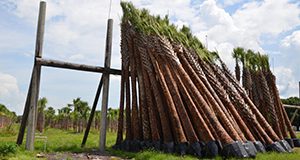 Palms are woody monocots characterized by the production of adventitious roots from the base of the trunk. Unlike the woody roots of dicots, such as oaks, gumbo limbo, and sea grapes, palm roots have no secondary thickening. Also, unlike trees, palms are incapable of repairing damage to their trunks. Most importantly, the life of a palm is dependent upon the continued good health of the single growing bud known as the meristem. Thus, if the palm bud is killed, the entire palm or the palm cane will eventually die. This 4-page fact sheet discusses harvesting and transplanting sabal palms, cropped transplants, and regenerated transplants. Written by Stephen H. Brown and Tim Broschat, and published by the UF/IFAS Environmental Horticulture Department, September 2017.
Palms are woody monocots characterized by the production of adventitious roots from the base of the trunk. Unlike the woody roots of dicots, such as oaks, gumbo limbo, and sea grapes, palm roots have no secondary thickening. Also, unlike trees, palms are incapable of repairing damage to their trunks. Most importantly, the life of a palm is dependent upon the continued good health of the single growing bud known as the meristem. Thus, if the palm bud is killed, the entire palm or the palm cane will eventually die. This 4-page fact sheet discusses harvesting and transplanting sabal palms, cropped transplants, and regenerated transplants. Written by Stephen H. Brown and Tim Broschat, and published by the UF/IFAS Environmental Horticulture Department, September 2017.
http://edis.ifas.ufl.edu/ep543
Citrus Irrigation Management
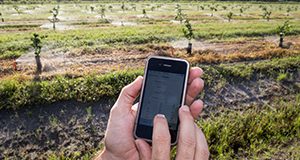 The chapter on irrigation management of citrus is largely taken from guidelines provided in SL253 on trees prior to Huanglongbing (HLB) prevalent conditions. A section has been added to cover recent findings on water use of trees affected by HLB and the impact this would have on the irrigation management considerations. This 6-page fact sheet discusses water supply, allowable soil water depletion, irrigation scheduling, soil moisture measurement, water budgeting, smartphone apps, irrigation strategies to improve nutrient uptake and reduce leaching, and irrigation management considerations for HLB-affected trees. Written by Davie Kadyampakeni, Kelly Morgan, Mongi Zekri, Rhuanito Ferrarezi, Arnold Schumann, and Thomas Obreza, and published by the UF/IFAS Soil and Water Sciences Department, September 2017.
The chapter on irrigation management of citrus is largely taken from guidelines provided in SL253 on trees prior to Huanglongbing (HLB) prevalent conditions. A section has been added to cover recent findings on water use of trees affected by HLB and the impact this would have on the irrigation management considerations. This 6-page fact sheet discusses water supply, allowable soil water depletion, irrigation scheduling, soil moisture measurement, water budgeting, smartphone apps, irrigation strategies to improve nutrient uptake and reduce leaching, and irrigation management considerations for HLB-affected trees. Written by Davie Kadyampakeni, Kelly Morgan, Mongi Zekri, Rhuanito Ferrarezi, Arnold Schumann, and Thomas Obreza, and published by the UF/IFAS Soil and Water Sciences Department, September 2017.
http://edis.ifas.ufl.edu/ss660
New and Revised Featured Creatures, September and October 2017
Founded in 1996, Featured Creatures provides in-depth profiles of insects, nematodes, arachnids and other organisms. Their website is a cooperative venture of the University of Florida’s Entomology and Nematology Department and the Florida Department of Agriculture and Consumer Services’ Division of Plant Industry. EDIS hosts copies of these profiles in fact sheet format. In September and October, the following have been added:
- Entomopathogenic Nematodes of Thrips Thripinema spp. (Nematoda: Tylenchida: Allantonematidae)
- Redbanded Stink Bug, Red-Banded Stink Bug, Smaller Green Stink Bug (suggested common names) Piezodorus guildinii (Westwood) (Insecta: Hemiptera: Pentatomidae)
- A Shoemaker Butterfly Prepona Laertes (Lepidoptera: Nymphalidae)
- Spiral Nematode Helicotylenchus spp. (Nematoda: Tylenchida: Hoplolaimidae)
The Cane or "Bufo" Toad (Rhinella marina) in Florida
Cane toads are an invasive species in Florida and in many countries around the world. They have been established in Florida since the 1950s. Cane toads are larger and more poisonous than Florida’s native toads; they can be fatal to dogs that try to eat them, and they may be harmful to Florida’s native species. Discover the history of cane toads in Florida and learn to distinguish them from native toads. Find out the impacts they can have on both ecosystems and people, and get tips on how to deal with them in yards and neighborhoods in this 6-page publication written by Steve Johnson and Audrey Wilson and published by the Wildlife Ecology and Conservation Department.
http://edis.ifas.ufl.edu/uw432
Florida's Agritourism Laws
Agritourism combines tourism and agriculture, Florida’s two largest industries, to provide interactive, engaging, and educational experiences for the public. This four-page document describes the laws governing Florida agritourism operations. Written by Mary Beth Henry and Kathryn Stofer and published by UF’s Department of Agricultural Education and Communication, September 2017.
http://edis.ifas.ufl.edu/wc285
What Is the ENSO Climatology Tool?
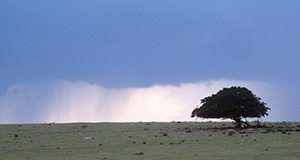 On a global scale, periodic anomalies in sea surface temperatures coupled with shifts in atmospheric pressure and winds, such as those associated with the El Niño Southern Oscillation (ENSO), can have profound impacts on weather conditions. ENSO affects atmospheric circulation patterns well into the midlatitudes and is the leading driver of seasonal climate variability in the United States. Tremendous advances have been made in predicting the occurrence of ENSO events with confidence three to six months in advance. This 5-page fact sheet discusses the ENSO climatology tool as well as possible challenges. Written by Caroline Staub, Clyde Fraisse, Eduardo Gelcer, and Daniel Dourte, and published by the UF Department of Agricultural and Biological Engineering, March 2017.
On a global scale, periodic anomalies in sea surface temperatures coupled with shifts in atmospheric pressure and winds, such as those associated with the El Niño Southern Oscillation (ENSO), can have profound impacts on weather conditions. ENSO affects atmospheric circulation patterns well into the midlatitudes and is the leading driver of seasonal climate variability in the United States. Tremendous advances have been made in predicting the occurrence of ENSO events with confidence three to six months in advance. This 5-page fact sheet discusses the ENSO climatology tool as well as possible challenges. Written by Caroline Staub, Clyde Fraisse, Eduardo Gelcer, and Daniel Dourte, and published by the UF Department of Agricultural and Biological Engineering, March 2017.
http://edis.ifas.ufl.edu/ae522
Oil Spill Science: Sea Grant Programs of the Gulf of Mexico: Persistence, Fate, and Effectiveness of Dispersants used During the Deepwater Horizon Oil Spill
This 9-page fact sheet concerns the use of dispersants in response to the Deepwater Horizon (DWH) oil spill, the first spill that occurred in the deep ocean, nearly a mile below the surface. The large-scale applications of dispersants used at the surface and wellhead during the Deepwater Horizon oil spill raised many questions about dispersants and highlighted the importance of understanding their effects on the marine environment. Written by Monica Wilson, Larissa Graham, Christine Hale, Emily Maung-Douglass, Stephen Sempier, and LaDon Swann and published by the Florida Sea Grant College Program, the fact sheet was selected for publication on EDIS by Monica Wilson. Originally published at the National Sea Grant Library: https://eos.ucs.uri.edu/EOS_Linked_Documents/gomsg/EX-GOMRI-1%20-%20Wilson_M_2015.pdf
http://edis.ifas.ufl.edu/sg150
Residents' Perceived Landscape Benefits Can Help Extension Promote Good Landscape Management Practices
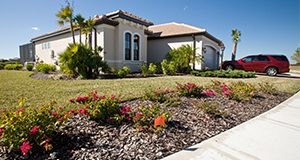
Households can help conserve and protect water resources through irrigation and fertilizer best practices without compromising the quality of their landscape. UF/IFAS Extension, along with Extension services across the country, conducts programs to protect water quality and quantity by educating communities and individuals about research-based landscape practices. This four-page fact sheet describes the results of a survey that can help Extension promote good landscape management practices. Written by Laura A. Warner, Amanda D. Ali, and Anil Kumar Chaudhary and published by the Department of Agricultural Education and Communication.
http://edis.ifas.ufl.edu/wc282
Recreational Harvesting of the Florida Bay Scallop: Citrus County
This publication includes a full-color map identifying access routes to the boat ramps and marinas in Citrus County near Homosassa and Crystal River, plus the latest information on scallops and scalloping, the recommended equipment you will want to bring, and a few tasty recipes for preparing Florida’s best summertime catch. Written by Savanna Barry and published by the Florida Sea Grant College Program.
http://edis.ifas.ufl.edu/sg147
Recreational Harvesting of the Florida Bay Scallop: Steinhatchee and Keaton Beach areas, Taylor County
A full-color map identifying access routes to the boat ramps and marinas in southern Taylor County near Steinhatchee and Keaton Beach, plus the latest information on scallops and scalloping, the recommended equipment you will want to bring, and a few tasty recipes for preparing Florida’s best summertime catch. Written by Victor Blanco and published by the Florida Sea Grant College Program.
http://edis.ifas.ufl.edu/sg146
Recreational Harvest of the Florida Bay Scallop: Hernando County
A full-color map identifying access routes to the boat ramps and marinas in Hernando County, plus the latest information on scallops and scalloping, the recommended equipment you will want to bring, and a few tasty recipes for preparing Florida’s best summertime catch. Written by Brittany Hall-Scharf and published by the Florida Sea Grant College Program.
http://edis.ifas.ufl.edu/sg148
Tools for Evaluating Soil Health
Soil health is a term synonymous with soil quality. It refers to the chemical, biological, and physical characteristics that influence a soil’s ability to function sustainably and to satisfy the needs of humans, support plants, and cycle elements, water, and energy between earth systems. This four-page fact sheet identifies ways to evaluate soil health. Written by Jehangir H. Bhadha, Jay Capasso, Robert S. Schindelbeck, and Allan R. Bacon and published by the Department of Soil and Water Sciences.
http://edis.ifas.ufl.edu/ss657
Collaborative Planning for the Future of Water Resources in Central Florida: Central Florida Water Initiative
Rules and regulations that govern our use of natural resources, specifically water, are changing. Over the past 80 years, Florida’s population increased four times, from approximately 5 million to more than 20 million people. With this population increase, water needs have also increased. Forward-looking communities think about the future of their towns, counties, or the state as they work on redefining regulations to meet future water needs without harming our springs, lakes, rivers, and estuaries. This 4-page fact sheet written by James Fletcher and Tatiana Borisova and published by the Food and Resource Economics Department discusses the Central Florida Water Initiative, which deals with advancing water-use and water-resource-protection strategies for Orlando and its vicinity.
http://edis.ifas.ufl.edu/fe1012
